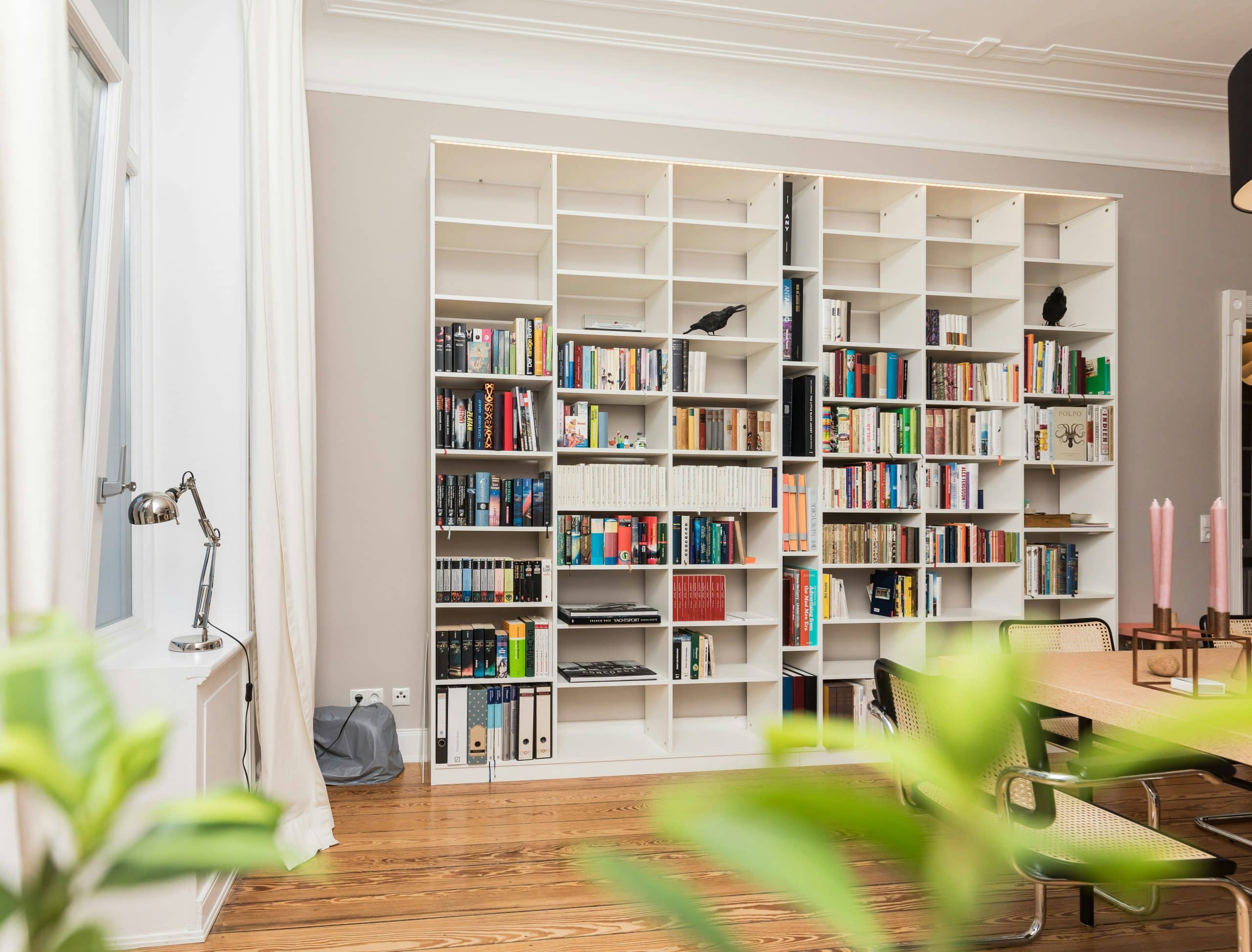Building a home library: a guide to book collecting and display

We’ve all dreamt of having our very own library at home—a personal collection of books, neatly lined up on shelves, reflecting our individual tastes, passions, and journeys. It’s more than just a space for reading—it’s a testament to your love for the written word, a display of your intellectual curiosity, and a cozy retreat that offers solace in the embrace of a good book. In this comprehensive guide, you will discover the joy of building a home library, the art of collecting books, and inspiring ways to showcase your literary treasures.
Choosing the Right Room for Your Library
The first step towards creating your home library involves identifying the perfect room in your house. This could be a spare room, an underutilized attic, or even a quiet corner in your living room. The choice of room is an essential step in your journey to create a personal library as it sets the stage for the design and overall ambience of your reading space.
A découvrir également : Smart storage solutions for a clutter-free home
Ensure that the chosen room is spacious enough to accommodate your book collection while also providing comfortable seating for reading. Pay attention to the lighting as well. Natural light is ideal for daytime reading, but ensure there are enough light fixtures for when you want to curl up with a book in the evenings.
Bear in mind, the room should be a quiet sanctuary, detached from the hustle and bustle of the household. After all, the purpose of a home library is to provide a tranquil space where you can immerse yourself in stories and ideas undisturbed.
A lire également : Home-based business spaces: designing for productivity and comfort
Selecting and Collecting Books
While the physical attributes of your library are crucial, the heart of your library will always be the books it houses. Your collection should reflect your reading preferences, but it can also be an opportunity to explore new authors, genres, or literary periods.
Look for books at various places—public and school libraries often host sales of excess stock, used bookstores can be treasure troves of rare finds, and online platforms offer vast selections of both new and used books. Remember, the goal is not to simply fill your shelves, but to build a collection that resonates with you.
Don’t limit your collection to printed books alone. In this digital age, e-books and audiobooks are viable options that offer flexibility and convenience. A well-rounded library accommodates multiple formats, catering to different reading styles and situations.
Organizing Your Book Collection
Organizing your books is both a practical task and a design decision. The organization method you choose can greatly influence the accessibility and aesthetic appeal of your library.
Most public libraries use the Dewey Decimal System, which categorizes books by subject. Alternatively, you could adopt the Library of Congress Classification system, which groups books into broad areas of knowledge.
However, for a home library, feel free to get creative. You could organize your books by author, genre, color, or even the order in which you plan to read them. The key is to find a system that works best for your reading habits and aesthetic preferences.
Designing Your Library Space
When it comes to design, your library should be a reflection of your personality. From traditional wood-lined sanctuaries to modern minimalist spaces, the design choices are limitless.
For the shelves, consider the size of your book collection and future acquisitions. While built-in bookcases exude a traditional vibe, modular shelves offer flexibility and can be easily reconfigured as your collection grows. Don’t forget to add comfortable seating—a plush armchair, perhaps, or a hammock for a more laid-back feel.
Additionally, you can enhance the atmosphere with personal touches—display souvenirs from travels, family photos, artwork, or any other items that contribute to a cozy, welcoming vibe.
Preserving Your Home Library
Building a home library is not just about collecting and displaying books—it’s about preserving them as well. Books are susceptible to environmental conditions such as humidity, light, and pests.
Avoid placing your books in direct sunlight, which can cause their spines to fade. Regulate humidity levels to prevent the growth of mold. Regularly clean your shelves to keep pests at bay.
Remember, each book in your collection is an investment, not just in financial terms, but in the cultural and emotional value they add to your home. Proper preservation ensures that your library can be enjoyed by generations to come.
Building a home library is a labor of love, but the outcome is deeply rewarding—a private oasis brimming with stories, knowledge, and inspiration, tailored to your taste. With careful planning, thoughtful collecting, and a dash of creativity, you can build a home library that will indulge your love for reading and become a cherished part of your home.
The Art of Book Collecting
Building a home library is incomplete without the process of book collecting. This process is unique to each individual, reflecting their tastes, interests, and preferences. It is also an ongoing process as you constantly evolve and discover new genres, authors, or interests.
For some, book collecting may be about accumulating rare books or first editions, while for others, it might be about gathering works from a favorite author or within a favorite genre. Others might focus on the aesthetic appeal of books, collecting beautifully bound or illustrated volumes.
To discover books for your collection, explore various avenues. Public library sales, high school libraries, used bookstores, and online platforms are all great places to start. You might also consider book swaps with friends or joining a book club for recommendations.
While it is easy to get carried away in the excitement of book collecting, remember to keep your library manageable and relevant. Regularly review your collection and consider donating books that you have outgrown or no longer resonate with. This will keep your personal library fresh and meaningful.
Displaying Your Books: Interior Design Tips
Once you’ve begun to accumulate your collection, it’s time to think about how best to display your books. A well-designed library is not just visually pleasing, but also makes your collection easily accessible.
Choosing the right shelving is crucial. Consider how much space you have, the size of your collection, and your preferences in terms of style. Floor-to-ceiling shelves make a dramatic statement, while modular shelving units offer versatility. Consider engaging an interior designer to help devise the best layout for your space.
For a more organized display, group your books in a way that makes sense to you—by author, genre, color, or date of publication. You might also consider creating ‘zones’ based on your interests or reading habits. For instance, a quiet corner for deeper reading, a display of your favorite books near the entrance, or a children’s section if you have young readers at home.
In addition to books, your library can also display decorative objects that reflect your personal style—photographs, artworks, plants, or souvenir items. These personal touches will make your library truly unique and inviting.
Conclusion: Building Your Dream Home Library
Building a home library is a deeply personal and rewarding project. It allows you to create a space in your home that is entirely dedicated to your love for books and reading. Whether you have an entire room to dedicate or just a quiet corner in your living room, a personal library is a haven of peace and inspiration.
Remember, the most important thing is that your library reflects you. It should house books that you love, in a space that you find comfortable and inviting. Whether you’re an experienced book collector or just starting your first collection, the process of building a home library is a journey to be savored.
Above all, enjoy the process. From hunting for rare books to deciding on the perfect reading chair, each step takes you closer to having a space that’s uniquely yours. So, dive in, start collecting, and before you know it, you’ll have a home library you love.
Remember, "A good library will never be too neat, or too dusty, because somebody will always be in it, taking books off the shelves and staying up late reading them." – Lemony Snicket.
